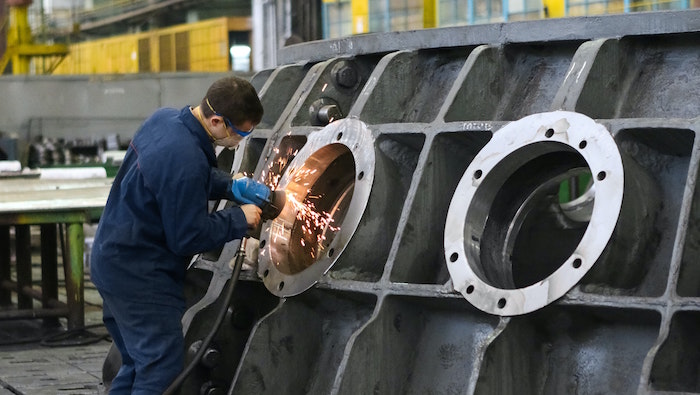Day-to-day operations in job shops and contract manufacturing facilities can be difficult, even on a good day. Deadlines, quality control, and constant change is the name of the game, and the ability to provide diverse, non-standardized builds for your contracts is a challenge in its own right.
Rarely is there consistency in your day-to-day or week-to-week activities, as today’s job might go through a completely different process than yesterdays.
Job Shops: Managing Complexity and Bringing Order to Chaos
You might not get the ‘ease’ that a traditional manufacturer experiences—running a constant flow of products day in and day out—but for clients, your role is necessary.
Managers at these facilities are a different breed, and the job description requires you to deliver creativity, process control, and commitment to quality. It’s not a job for the faint of heart, and people are constantly scrambling to handle new challenges that come with each job.
From booking the right machine at the right time to dealing with a unique workflow for each item, the journey from taking an order to finishing and inspecting the end product goes through a variety of steps—each of which add complexity and risk of something going wrong.
Common Challenges for Job Shop Managers
There there are ways to thrive in this kind of business—the job shop market fills a specific need, and if your business is able to overcome the challenges, you can carve out a place in the market. Better yet,
But first, you’re going to have to identify and work through those challenges. From the short-term to the strategic, many companies face the same issues on the way to success. Today, we’re exploring some of the common challenges and will discuss how the right solution can help you to overcome.
1) Scheduling with Constant Variability
By their very nature, job shops are built on variability. Not only does this affect pricing and margins, customer pipelines, and procurement, it often ends up making the scheduling process for both people and machines a nightmare.
Variability, in turn, can result in workflows collapsing. Without control over a process, you might end up with two very different orders converging at the same machine, at the same time, resulting in a bottleneck that prevents either job from moving to the next step. Add to this some of your most lucrative business—emergencies and rush orders—and you can end up overwhelming your people with work.
On other days, you might find yourself with little to do, waiting for the phone to ring. No matter what you do, this variability can leave you fighting to stay afloat. Overcoming this requires you to overcome the next challenge—creating a constant stream of customers.
2) Filling and Maintaining the Customer Pipeline
Job shop owners likely got in the business to build—not to take on the role of salesperson. Nothing beats working with your hands, but you often find yourself spending more time talking than working.
Understandably, however, it pays to market and sell. You can pride yourself on quality, on-time delivery, and more, but you need to instill this faith in potential customers.
To overcome this, the solution is twofold. First, you need to ask why your current customers value you. This can help you to develop and refine your service offering, reinforce your strengths, focus on profitable jobs, and give you more opportunities to work. Second, you’re going to want to have a clear picture of leads, prospects, and customers.
Too often, leaders rely on outdated ways of tracking customers, using a mess of Excel and email to create customer profiles and communicate. Rarely do they have insights into a customer’s interest until they hear “we’ll sign on” or “we went with someone else.”
The right technology and data can help you to track user flow and understand how to communicate, develop consistent pricing, and facilitate the sales process.
3) Offering Accurate Pricing and Increasing Margins
To stay in business, you’re going to need to break even. To grow it, you’re going to need to increase your margins. But to increase your margins, you’re going to need a clear picture of your pricing and service offering to offer competitive and profitable bids.
Unfortunately, many job shop manufacturers rely on a mess of spreadsheets that often fails to connect costs with prices, ultimately resulting in a blind stab when building a quote. This can result in putting out a bid that’s way too high when you could go lower or putting out a low offer that turns out to be unprofitable. Either way, you’re losing business or money.
The right technology will offer a clear picture of how much a job will cost you, allowing you to create a better quote that results in more business.
4) Procuring and Controlling Inventory
Variable schedules mean variable inventory needs. While some of your business may be consistent, requiring a specific order size of a specific part each month, custom jobs or infrequent repairs often require you to find something fast.
Unfortunately, a lack of control over procurement and visibility into inventory can create a variety of challenges. In turn, this lack of visibility trickles into the rest of the process. Maybe the part you need wasn’t as cheap as you thought. Maybe you thought you had something in inventory and your lead time reflected that—only to find out this wasn’t true.
“Yes, we can do this at [price] by [date]” goes out the window when you’re scrambling to find a part, ordering something you thought you had, or biting the bullet on an unexpectedly pricy part.
To address this, the right technology needs to provide you real time information about your current stock and potential suppliers so that your quotes are more accurate and more easily created.
The Biggest Challenge? Few Solutions Available
Too often, these challenges boil down to back-office software. Many job shops rely on disconnected technologies, spreadsheets, and entry-level software to handle their activities—not because they fail to understand the options available, but because the well-known products weren’t built for them.
MRP has been in use at manufacturing organizations for the better part of a century now, but never delivered full value for the complex needs and processes of the job shop. Often, a manufacturing solution will offer way too much functionality at an exorbitant cost. Unfortunately, this left job shops relying on a mess of unfocused or undersized software that left them facing the above challenges.
The Solution: ASC Job Shop Manufacturing for Acumatica
Job shops need specific functionality—not a massive solution with more bells and whistles than necessary. That’s where we came in. Seeing the lack of job shop-focused technology, we ser out to create a light manufacturing solution to handle the needs of the job shop.
Simple to use, the solution for job shops and manufacturers who require a production system without full MRPII. ASC’s Job Shop Module supports work orders, BOM’s (& sub-BOM’s), serialization, lot control, labor collection, replenishment, routers, kit labeling, job costing and robust reporting. Get to know more about how this works and give us a call at (877) 590-4ERP to discuss it with the experts.

